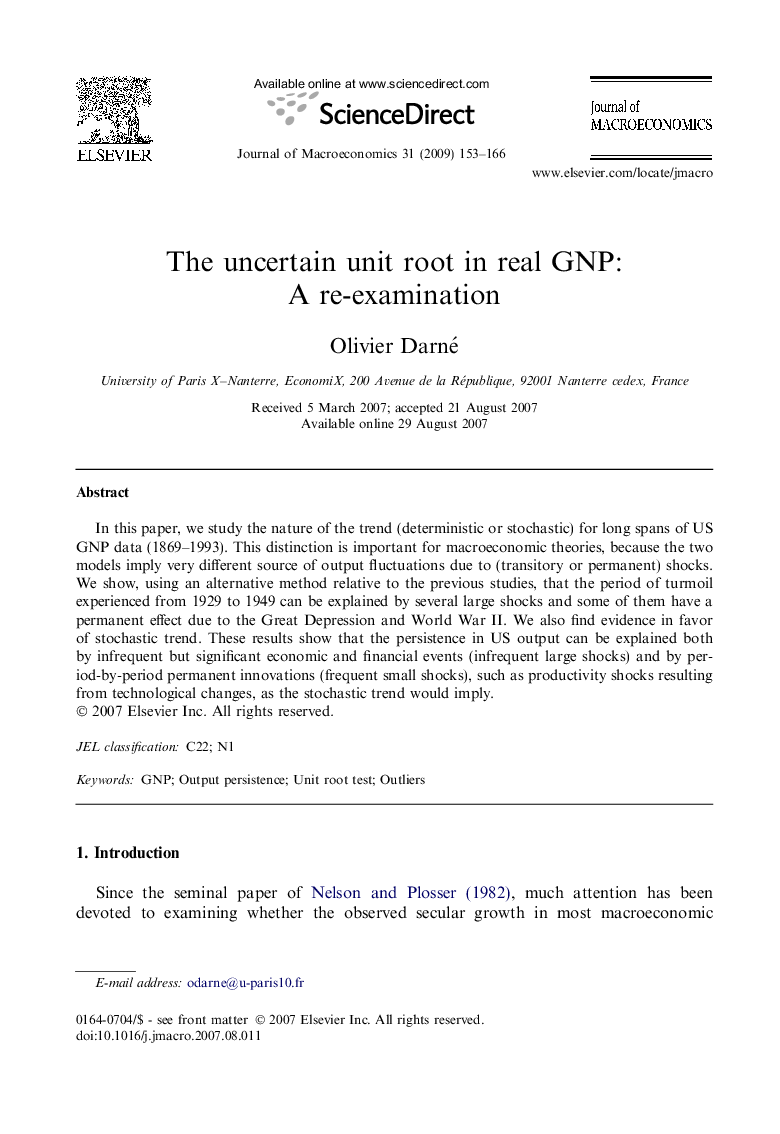| Article ID | Journal | Published Year | Pages | File Type |
|---|---|---|---|---|
| 965627 | Journal of Macroeconomics | 2009 | 14 Pages |
Abstract
In this paper, we study the nature of the trend (deterministic or stochastic) for long spans of US GNP data (1869-1993). This distinction is important for macroeconomic theories, because the two models imply very different source of output fluctuations due to (transitory or permanent) shocks. We show, using an alternative method relative to the previous studies, that the period of turmoil experienced from 1929 to 1949 can be explained by several large shocks and some of them have a permanent effect due to the Great Depression and World War II. We also find evidence in favor of stochastic trend. These results show that the persistence in US output can be explained both by infrequent but significant economic and financial events (infrequent large shocks) and by period-by-period permanent innovations (frequent small shocks), such as productivity shocks resulting from technological changes, as the stochastic trend would imply.
Related Topics
Social Sciences and Humanities
Economics, Econometrics and Finance
Economics and Econometrics
Authors
Olivier Darné,
